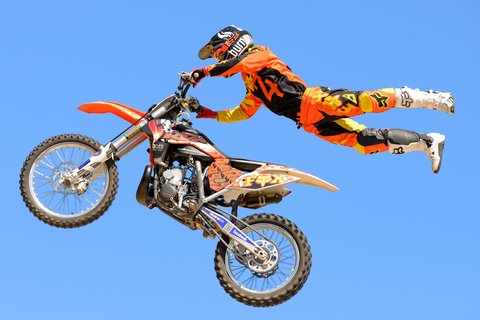Imagine an acrobat. Now put that acrobat on a high-performance dirt bike. Then add 80 mph to the acrobatics. By the way, 80 mph is the required speed for a small plane to go airborne.
So an acrobat, a motorcycle, high velocity and extreme jumps. Next, ladle in some large egos and a sport that runs on spectacle and you have freestyle motocross. In Mexico City this year, the top contenders squared off and gave their best moves to dazzle the crowd.
The greater tour of the 2015 X Fighter world championship took us to Mexico City, Athens, Madrid, Pretoria, and the United Arab Emirates.
FMX riders typically use much of the same riding gear as MX racers. This includes a helmet, goggles, gloves, boots, jersey, a chest protector and MX pants. They may supplement this with elbow and knee pads. Riders may also choose to wear ‘body armor’ to protect the chest and legs when performing the most dangerous of tricks, as did Travis Pastrana when performing his double backflips. A neck brace may also be worn if riders are concerned about neck injuries or are attempting dangerous tricks.
In this sport, riders compete for glory through stunts and behavior that not only defies gravity and probably some laws of physics, but sanity as well. The types of spins, flips and twists performed here are rivaled only by the cavalier attitude of the riders. The backflip was once considered the holy grail of FMX. It was a trick that every rider considered impossible and was considered more appropriate in video games than in real life. Speculation of the possibility began among freestyle motocross riders in 1998, in the Motocross film Children of a Metal God. The stunt is now ubiquitous to the sport, with more and more riders pushing the limits each year, making Freestyle Motocross almost an aviation event.
© Chbm89 | Dreamstime.com – A Professional Rider At The FMX (Freestyle Motocross) Competition At LKXA Extreme Sports Barcelona Photo








